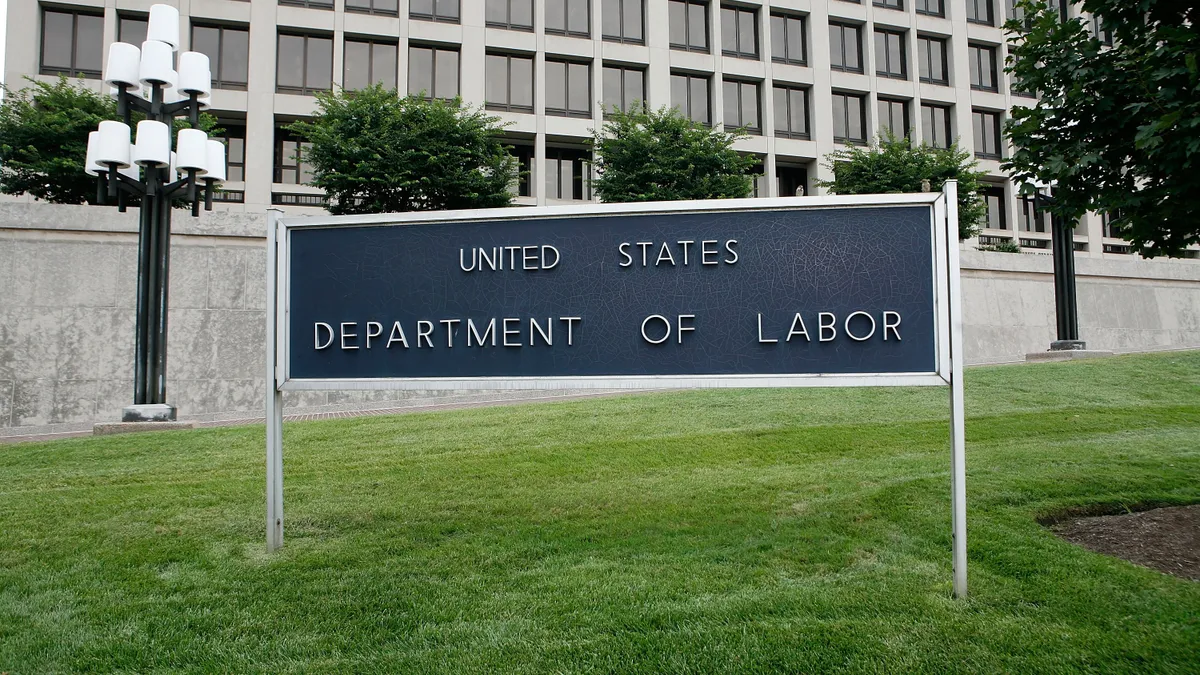The Family and Medical Leave Act generally requires that employers provide eligible workers 12 weeks of job-protected leave for a myriad of reasons.
And while that may seem straightforward, 12 weeks per year isn’t "always an easy 12 weeks," Daris Freeman, assistant VP and legal counsel at Unum, explained in a Feb. 10 Disability Management Employer Coalition webinar.
Workers may start a block of leave midweek, or take time off intermittently, leaving HR to do a little math to ensure compliance with the law. That work starts with determining an employee’s schedule, co-presenter Christine Schott, senior advisor in the U.S. Department of Labor’s Wage and Hour Division, explained, because that 12-week entitlement is based on each employee’s typical workweek.
To explain that process, Freeman and Schott addressed a few variables that can come into play — and offered some examples for HR pros embarking on the task.
Holidays affect leave entitlements — sometimes
When an employee takes a full week off for an FMLA-covered reason, holidays do not affect their leave entitlement, the speakers said.
Example: David typically works Monday through Friday. He had surgery on Monday morning and took the rest of that week and the whole following week off for recovery. The employer was closed one day for Memorial Day during that time and paid workers that day, but David has still used two weeks of FMLA leave.
The FMLA’s protections remain in place whether or not an employer opts to pay workers for certain days off, Schott explained. Even if David’s hypothetical employer had a paid leave program and designated nine days off as "leave pay" and Memorial Day as "holiday pay," David still used two weeks of FMLA leave during that time.
When an employee takes only part of a week, however, things get trickier.
Example: Tasha is pregnant and typically works eight hours per day, Monday through Friday. Her employer grants employees a paid holiday one Monday, for Presidents Day. On Wednesday morning, her doctor puts her on bedrest for two weeks. Tasha has used 1 3/5 weeks of leave.
Because Tasha’s typical workweek is five days long and she didn’t take a full workweek off, the employer counts only the days she was out — three out of five days.
Overtime can muddy the water
Because the FMLA instructs employers to use an employee’s typical workweek for this calculation, those who generally work overtime will have that added time built into their entitlement.
Example: Rose works 10-hour shifts at a grocery store five days per week — Tuesday through Saturday. She has a chronic condition and her doctor says she must limit herself to eight hours per day for eight weeks. At the end of those eight weeks, Rose has used 1 3/5 weeks of leave.
While it may be tempting in situations like the above, Rose’s employer can’t merely deem her temporary 40-hour workweek "good enough" and call it a day, Schott said; DOL takes the position that neither the employer nor the employee can waive the rights conferred by the law.
The same logic applies regardless of how long an employee’s workweek typically lasts.
Example: Fred is a construction foreman and works 10 hours per day, six days a week — Monday through Saturday. He is injured in a car accident Monday morning and spends a week in the hospital. He then returns to work but needs to take a half day every Tuesday for six weeks to attend physical therapy appointments. He has used 1 1/2 weeks of leave.
This is because a "half day" for Fred is five hours and that's 1/12 of his typical 60-hour workweek. Over six weeks, the physical therapy appointments amounted to half a workweek for FMLA purposes.
Little room for error
As Schott explained — and DOL has previously warned — the FMLA leaves little room for error when calculating workweeks and designating leave. Even employers that believe they’re acting generously by declining to designate time off as FMLA-covered (thinking they’re allowing workers to save it for the future) may be running afoul of the law.
"If the employee is eligible for FMLA leave and they have a qualifying reason, you need to count that time as FMLA leave," Schott said "Because as the enforcement agency, we're going to come in and say you are obligated to protect that time.













